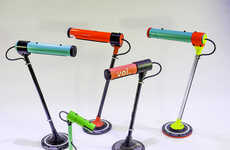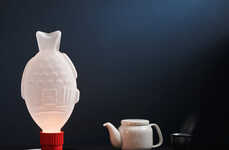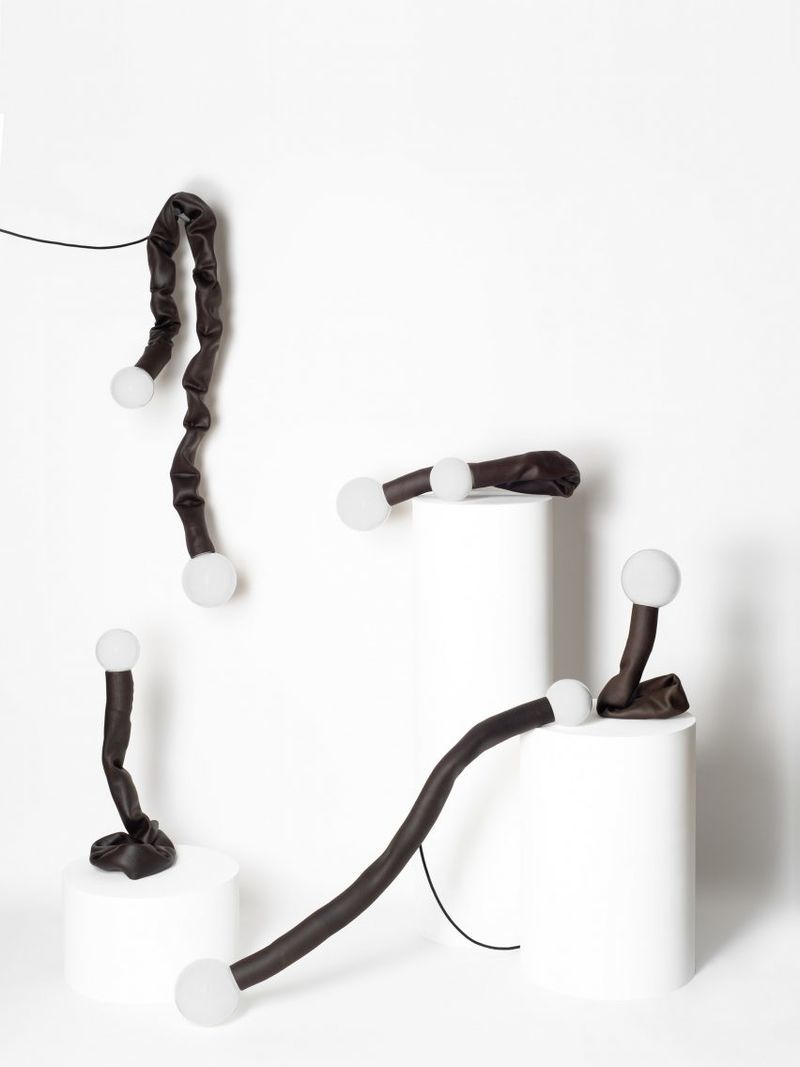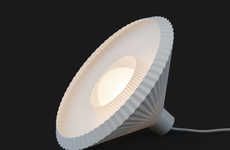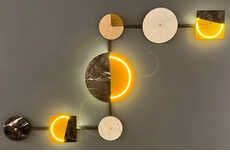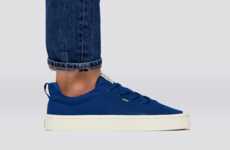
High Society Turned Beer & Coffee Waste Into Usable Lamp Parts
Laura McQuarrie — October 22, 2019 — Eco
References: high-society.it & dezeen
High Society made the most of waste from its local beer and coffee industry, allowing the Italian design studio to create a unique range of light sources. The Senilia collection introduces pieces with tubular shapes, each of which is bent, twisted and offered two different color schemes.
The project involved working with discarded coffee bean peels, which are easy to shred, and hops and barley, which must be dehydrated before they can be processed into a usable powder.
Thanks to the fact that the lights are made without extraneous fasteners, the electrical components can be removed easily so that the remainder of the design can be composted. In place of metal components, the designers opted to use ceramic lightbulb holders, which are fully recyclable, as well as recyclable, textile-based cable insulation.
The project involved working with discarded coffee bean peels, which are easy to shred, and hops and barley, which must be dehydrated before they can be processed into a usable powder.
Thanks to the fact that the lights are made without extraneous fasteners, the electrical components can be removed easily so that the remainder of the design can be composted. In place of metal components, the designers opted to use ceramic lightbulb holders, which are fully recyclable, as well as recyclable, textile-based cable insulation.
Trend Themes
1. Upcycling Waste - Designers are creatively making products from materials that were once considered waste, creating an opportunity to turn waste into valuable assets.
2. Sustainable Lighting - Incorporating sustainability in lighting design through the use of recyclable and compostable material is creating a trend towards green products.
3. Circular Economy - Closing the loop by designing products with circular economy principles enables designers and businesses to create and extract value from waste, leading to innovative business models and increased profitability.
Industry Implications
1. Furniture Design - Incorporating upcycling and sustainability in the furniture industry can create unique designs that appeal to environmentally conscious consumers.
2. Sustainable Packaging - Exploring the use of waste materials in packaging design can lead to more sustainable products that reduce environmental impact.
3. Sustainable Fashion - Eliminating waste and incorporating circular economy principles in fashion design provides opportunities for creating unique clothing designs and sustainable business models.
3.2
Score
Popularity
Activity
Freshness




